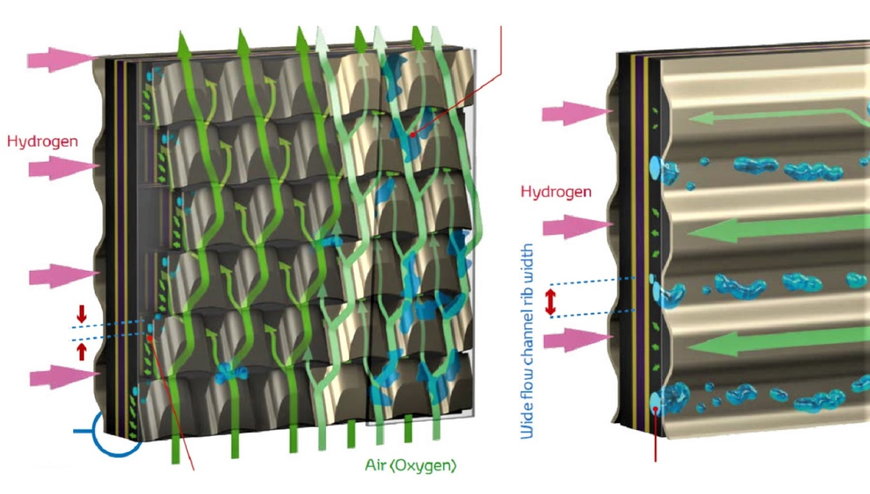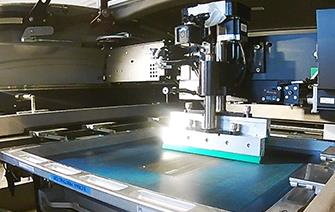www.auto-innovations.net
15
'20
Written on Modified on
MEDIAWORLD
The power density of fuel cells is expected to double in the medium
The 114-kW fuel cell in the Toyota Mirai has a power density of 3.1 kW/l, one of the best scores of any of the fuel cells currently on the market. Due to their number and thickness, bipolar plates contribute a large share of the cell volume. A great deal of R&D is actively being carried out on this topic, and some of the results offer the hope of achieving a power density of 6 kW/l in the medium term.

Evolution of the bipolar plates of the Toyota Mirai fuel cell
Proton exchange membrane fuel cells (PEMFCs) are being developed for many industries to produce electricity, particularly from hydrogen. In the world of transport, they would enable heavy and/or long-range electric vehicles to produce power without carrying large masses of batteries, a technically and environmentally questionable solution.
For fuel cell developers, the challenges are still numerous: reducing their cost (in particular by reducing the mass of platinum), increasing their lifespan as well as their power density and mass. With regard to this last characteristic, the size of a fuel cell is strongly influenced by the thickness of the numerous bipolar plates whose channels carry hydrogen and oxygen to the reactive membranes and evacuate water.
These channels were initially obtained by machining graphite blocks. This manufacturing process then evolved towards the moulding of carbon-impregnated materials, then by metal stamping, a technology chosen by Toyota for its Mirai. Its battery, which has been on the market since 2015, has a power density of 3.1 kW/l and the French company Symbio FCell currently claims 3.9 kW/l.
This figure is due to rise considerably in the wake of the announcements from certain development labs. The Chinese company Horizon Fuel Cell Technology has revealed that it can produce deep-drawn graphite plates with a thickness of only 1.1 mm, contributing to a power density of 4 kW/l (1.5 W/cm2 for a 0.6 V plate) and Dana Incorporated has just outbid the company with an announcement of 5.7 kW/l, again with deep-drawn metallic bipolar plates.

Carbon-based ink printing on bipolar plates by CEA-Liten
CEA-Liten is working on a completely different, patented solution: the channels are obtained by printing successive layers of carbon-based ink, a screen-printing process that it also applies to increase the performance of the anodes. The research centre believes that it will be possible to further improve the power density up to 6 kW/l, by reducing the size of the printed patterns.
Yvonnick Gazeau

